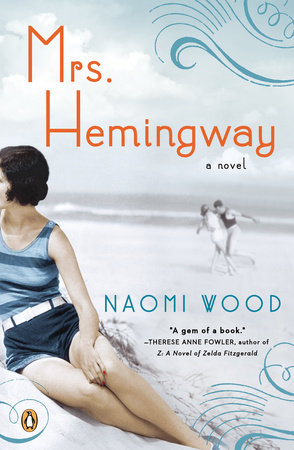Behind every strong man, there is an even stronger woman. It’s an expression that’s been used for centuries, and as I’ve studied and read history, I’ve come to believe that it’s one of the truer ones we’ve got. It’s always been an obsession of mine to learn about the wives and mothers of the men we’ve chosen to write our histories around, and what better way to explore the idea than through historical fiction, where people and places of the past can come to life? Which is what initially drew me to Naomi Wood’s engrossing historical novel, MRS. HEMINGWAY.
In MRS. HEMINGWAY, Wood weaves together the stories of Ernest Hemingway’s four wives—Hadley Richardson (whom readers may remember from Paula McLain’s THE PARIS WIFE), Pauline Pfeiffer, Martha Gellhorn, and Mary Welsh—as they meet, fall in love with, and have their hearts broken by the writer. Spanning nearly forty years and jumping from Chicago to Spain to Paris to Idaho, the novel presents a new view of a well-known story. As they interact, overlap, and watch history unfold, and as Ernest gets more and more famous (and more and more unstable), each woman is forced to reckon with the part she’s played in the creation of an American icon, and with what’s become of her own life.
I’ll start off by saying that this is the best kind of historical novel: one that tells the whole story without taking you forever to read. At a quick 300 pages (no, really—I read it in an afternoon!), it shows a Lost Generation that is sure to satisfy any newbie or longtime lover of the era.
Though the simple presentation of a great deal of research is impressive, what stands out most is how Wood manages to create four different personalities and perspectives for these characters—especially because history has rarely taken the time to study them apart from their shared husband. From supportive Hadley and sophisticated, possessive Pauline to the fiercely independent Martha and the young, protective Mary, each woman is given her own opportunity to tell the story. Though a life with Ernest is what connects them, he is not what defines them—and it’s his expectation that he should that ultimately destroys his relationship with each. The point of the book (thankfully) is not to pit the women against each other or have them compete for the title of Hemingway’s greatest love: it is to give them a role in their own story.
And, I learned something new. After—spoiler alert (except not, because it’s history!)—Ernest kills himself in Idaho, Mary calls Hadley, who is still alive and living elsewhere, to let her know. While I’d thought it was common knowledge that he had been depressed and suicidal, Wood shares here, accurately, that Mary was determined to maintain his public image and legacy, and refused to reveal the true cause of death. During the imagined phone call with Hadley, Wood writes an unforgettable scene where so much is said and unsaid. It’s awkward and somewhat infuriating, but it’s ultimately just sad.
As the final wife tries to downplay the severity of his condition, the first still knows him better than anyone—and lets her pretend. The experience of knowing this man is enough to bond them for life, and yet still somehow enough to keep them from ever being honest with one another. It’s a powerful and poignant end to their story, and a reminder that sometimes, there are more than two sides to a love story.








